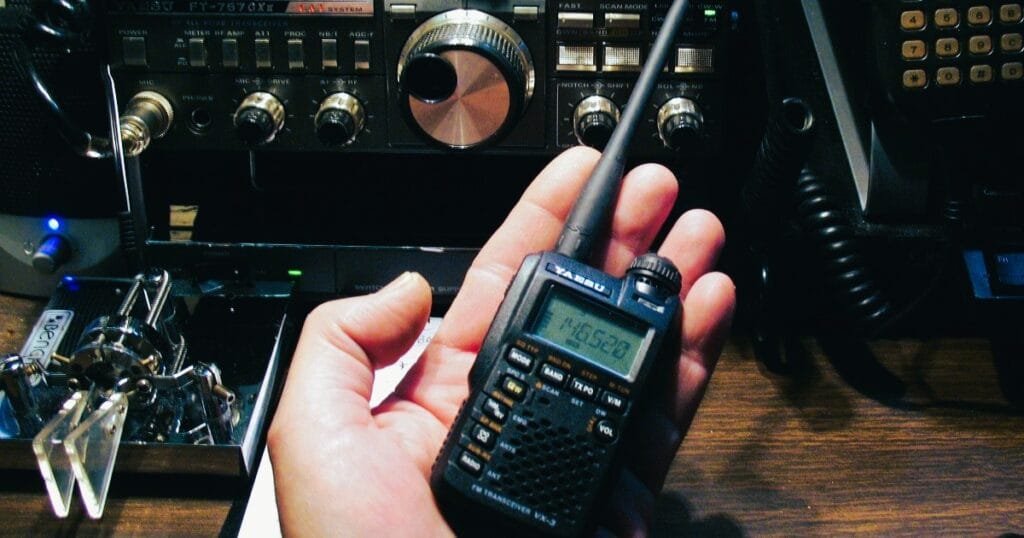Table of Contents
ToggleTop Field Batteries for Your Ham Radio Adventures: A Comprehensive Guide
Greetings from TalkieTrail again! Nothing is more thrilling than packing your radio equipment and venturing into the unknown if you share my love of the great outdoors. One thing is certain, regardless of whether it’s a SOTA activation, a field day, or simply a pleasant stroll in the woods: an amateur radio operator is likely to experience a sudden transition from radio joy to radio stillness in the absence of a dependable power supply. Before they reach the fun path, no operator (or their brand) wants to be able to claim to have traveled those miles just to have their battery die. We will be introducing amateur field batteries, the unsung heroes of field operations, in this ham radio study.
Why Field Batteries Matter
With that brilliance let us first delve into the relevance of field batteries before jumping into battery types and manufacturers. In the wilds, however, using your ham radio means being away from the conveniences of home, with none of the amenities such as wall outlets, generators, or backup power—unless you pack it in. This is where we’ll say it again — a rugged field battery is key; it can keep your equipment powered and operational while in the field. It is the lifeblood that keeps your radio working as long as you need it and provides you with continued contact with the world beyond you. You definitely do not want to be the ham radio operator with a flat battery just at the moment the conditions are perfect to make contacts!
The second major problem is a battery that discharges quickly for a ham operator. Facing same issue? Read our troubleshooting article here.
Types of Field Batteries for Ham Radio Use
So, field batteries are not ever going to be one size fits all. Each type of battery has its benefits and drawbacks to offer; the trick is to couple the battery to your needs and working styles. First things first, let us delve deeper into the different options with ham radio field operations.
SLA Battery Pack (Sealed Lead Acid Batteries)

SLA batteries are the old reliable bruisers of portable power solutions. They are reliable, affordable, and reasonably easy to find. However, they have downsides — weight, most notably — like that old friend in your shed. SLA batteries are huge and not particularly energy dense (energy stored per unit weight). That being said, they make a good option if you are camping close to your car or aren’t going to be schlepping your batteries far.
Pros
Cons
- Affordable
- Widely available
- Reliable for stationary setups
- Heavy
- Low energy density
NiMH Battery Pack (Nickel-Metal Hydride Batteries)

For a lighter weight alternative, consider NiMH batteries to give you an efficient and functional solution that brings power and portability to extended crosshairs. So these at least strike a nice balance between SLAs and pricier stuff. The difference is their lighter weight, but the energy density is not massively higher. However, if you want your mobility without the expense, NiMH batteries offer a superb compromise between weight, capacity, and low cost in a durable and heavy duty package.
Pros
Cons
- Lighter than SLA batteries
- Reasonably priced
- Readily available
- Limited energy density
- Moderate lifespan
LiFePO4 Battery Pack (Lithium Iron Phosphate Batteries)

You can even say we’ve finally reached the upper echelon of portable batteries; now with massive amounts of power and capacity. LiFePO4 batteries are durable, light in weight, & high energy density. Due to their longevity and efficiency, ham radio tests routinely place these batteries as the top option for the field. While they are pricier, think of them as your investment towards your ham radio future. Not just power but assurance that your battery will not fail at an important contact.
Pros
Cons
- High energy density
- Lightweight and portable
- Long cycle life
- Expensive
- May require specialized chargers
Top Picks for Ham Radio Field Batteries
With all the batteries I’ve tested over the years, though, here are a few of my top picks to undertake your next adventure with. They all have their own unique benefits and are consistently praised in many ham radio reviews.
Bioenno Power LiFePO4 Batteries
Why I like them: Bioenno Power has a great reputation in the portable ham radio community. And they are a great performance and environment-friendly choice for ultra-high efficient LiFePO4 batteries with high adaptability (flexibility in design). One of my favorite types is a 12V, 15Ah type, as it is good in power capacity-power delivery balance and mobility. You can just carry it in a bag and not feel weighed down.
Characteristics: The included Battery Management System (BMS) gives you your own battery latter monitor and prevents overcharge, over discharge or damage. Also, it should go without saying LiFePO4 batteries are so much more environmentally friendly than lead-acid batteries and fit right in with the eco-friendly ham.
Pros
Cons
- Lightweight and portable
- Long-lasting
- Environmentally friendly
- Higher upfront cost
- May require a specialized charger
Powerwerx LiFePO4 Batteries
Why I Love Them: Powerwerx has a long history in the amateur radio world, and its LiFePO4 batteries meet up to the expectations. The 12V, 50Ah type is very powerful, capable of handling lengthy field days or SOTA activations. For serious operators who want power for extended periods of time, this is an excellent choice.
Features: The battery has Anderson Powerpole connections, which are typical in many ham radio systems. This makes the Powerwerx battery exceptionally simple to incorporate into your existing gear without the need for adaptor connections.
Pros
Cons
- Lightweight for its capacity
- Comes with standard connectors
- Long-lasting power
- Expensive
- Overkill for short, casual outings
Liontron Lithium LiFePO4 Battery
Why I Love It: If you’re planning a multi-day adventure or a prolonged stay in the field, consider the Liontron 12.8V, 100Ah battery. It’s intended for individuals that want significant lasting power in the field, allowing for hours or even days of continuous use.
Features: This durable battery is designed to withstand the most extreme outdoor circumstances. It also has a Bluetooth-enabled Battery Management System, allowing you to monitor its status directly from your smartphone—talk about modern convenience!
Pros
Cons
- Rugged and durable design
- Bluetooth monitoring capability
- Large power capacity
- High price point
- Heavier than smaller capacity batteries
What to Consider When Choosing a Field Battery
When choosing a battery for your ham radio adventures, it is critical to consider more than simply cost and capacity. Take into consideration the following crucial elements that you must remember:
1. Capacity
How long your battery will operate your device before needing to be topped off is directly related to its charge capacity, which is often measured in amp-hours (Ah). For using your ham radio devices outdoors, you need a larger capacity of power storage but also have to be careful about the size of your battery pack. Because you don’t need too big of a size and obviously should not be too heavy. Carrying a heavy weight and big sized battery will be tough if you are traveling a distance.
2. Weight
Weight is always an important issue while going on an outdoor trip. You’ll want a battery that’s powerful yet not too heavy to carry. Lightweight batteries, such as LiFePO4, are good for lengthy excursions, whereas heavy SLA batteries are best for stationary or vehicle-based applications.
3. Durability
When you’re outdoors, your battery will be exposed to the elements. Look for a battery that can survive harsh circumstances including rain, heat, cold, and even dust. A long-lasting battery can protect your ham radio trip from an unexpected power outage.
4. Compatibility
Check the connections on your batteries to ensure they are compatible with your radio and other devices. Anderson Powerpoles are a common standard in ham radio systems, however not all batteries include these connections. You do not want to be in the field with a fully charged battery and no method to connect it to your equipment!
Ham Radio Review: Top-Value Battery Choice
After reading several ham radio reviews and putting various batteries through real-world tests, I am certain that LiFePO4 batteries provide the finest balance of mobility, capacity, and longevity for ham radio field operations. Whether you’re a casual weekend operator or a seasoned veteran getting ready for a SOTA activation, investing in a high-quality battery will improve your experience and keep you connected.
Need some help setting up a ham radio base station? Click here for step-by-step instructions. And don’t forget about the repeater.
Conclusion: Power Your Next Adventure
Choosing the correct field battery is more than a technical issue; it may be the difference between a successful, joyful expedition and a stressful day cut short due to a lack of power. Investing in a high-quality battery, like those discussed in this ham radio review, can guarantee that your radio adventures continue uninterrupted and joyful. Whether you like the lightweight ease of Bioenno Power’s LiFePO4 models or the serious staying power of Liontron’s 100Ah battery, there is a battery to meet your demands.
So, before you embark on your next ham radio excursion, double-check your power arrangement and invest in a dependable battery, and you’ll be prepared to face the wild with confidence. Happy operating!


